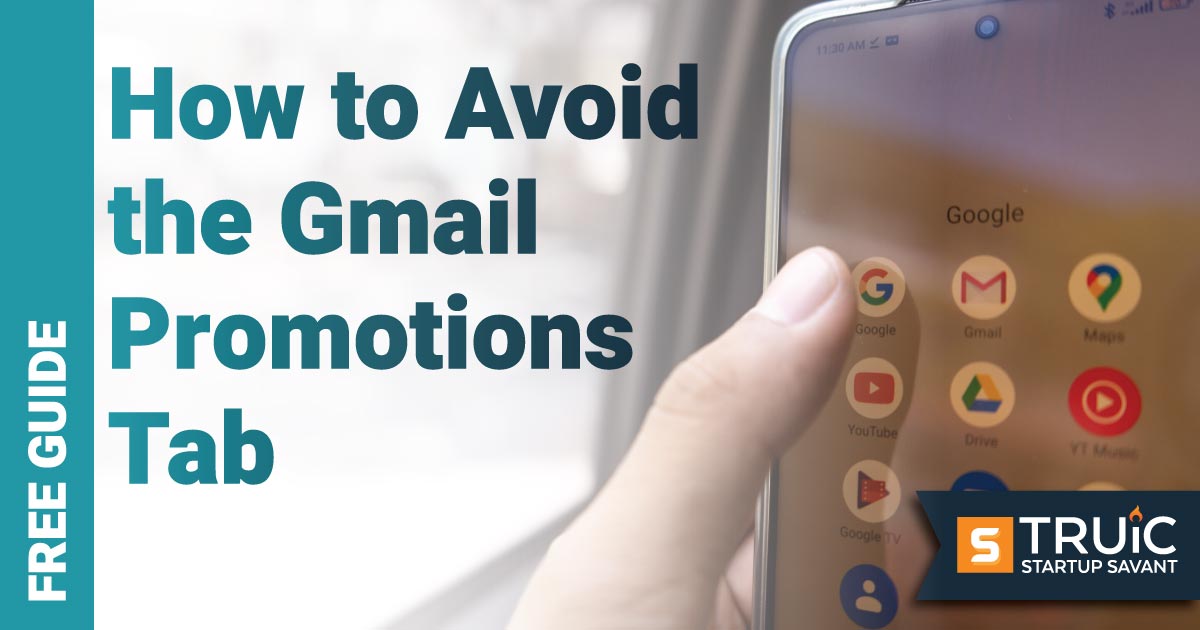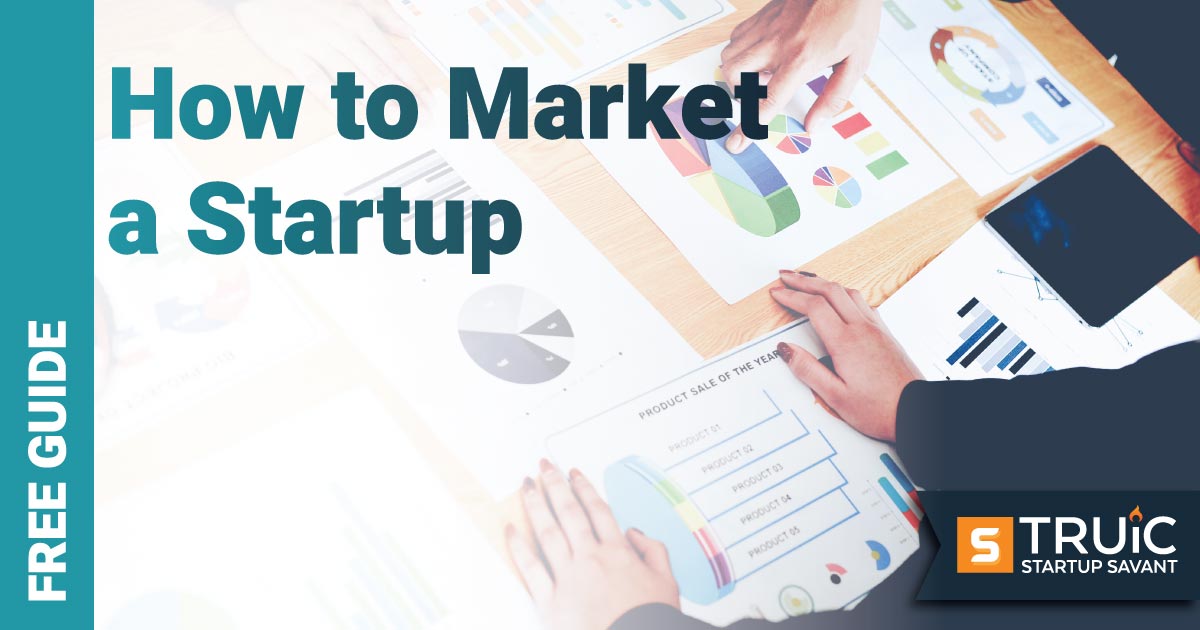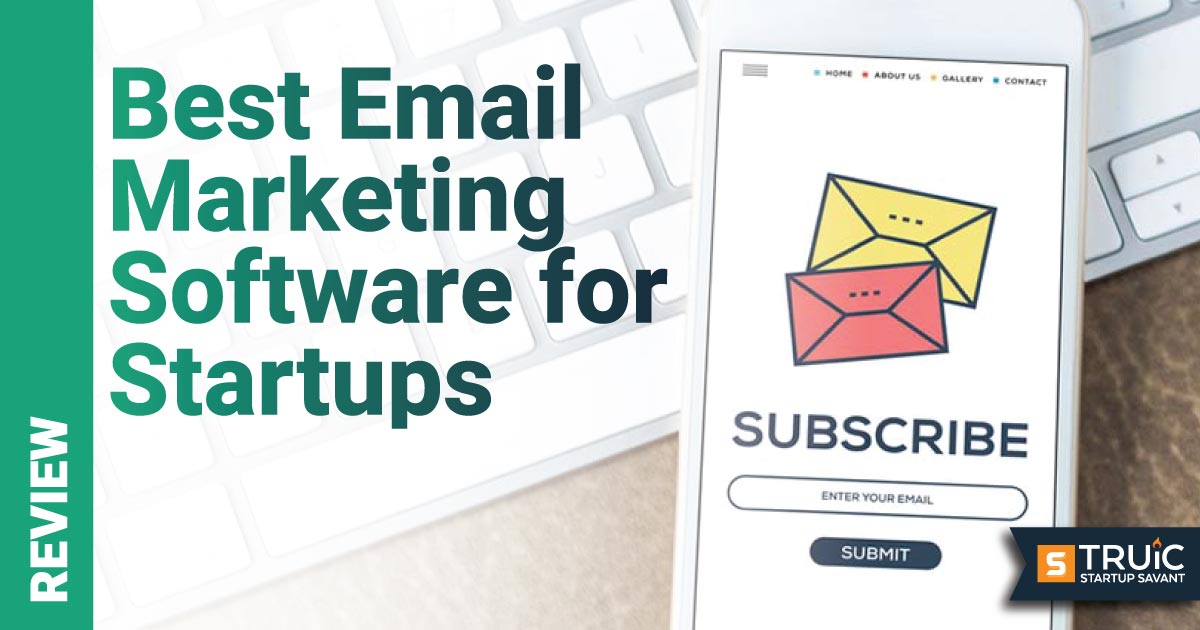How to Avoid the Gmail Promotions Tab

Last Updated: By TRUiC Team
Email marketing has the power to create deeper relationships with your clients while promoting your services or products. If you do it wrong, though, your email will end up in the Promotions tab, or what some call “the graveyard.”
In this guide, we’ll show what causes emails to land in the Promotions tab and what you can do to stay out.
Recommended: Check out our review of the best email marketing software for startups.
Preventing Emails From Landing in Promotions
Email marketing is a powerful tool that keeps customers engaged in your business. In a recent study by Salescycle, 50% of people on an email list have made at least one purchase per month. To get the most from your campaigns, learn what the Gmail Promotions tab is, how to prevent your emails from going there, and some tools that can help you in the process.
What Is the Gmail Promotions Tab?
Gmail created three different tabs in a person's inbox that separate all incoming emails: Primary, Promotions, and Social. These tabs help organize the inflow of messages and make it easier to manage. The Promotions tab is where most commercial emails end up unless you do something about it.
Most people know what kind of emails end up in the Promotions tab, and although it is not considered spam, many do not bother to go through every email. It's like having several catalogs from different stores sent to your home: you might be interested in one or two, but few people have the time to go through them all.
Reasons Why Emails Go to the Gmail Promotions Tab
Having your emails sent to the Promotions tab doesn't just happen overnight. There are specific reasons Google separates different emails into different tabs based on user behavior, your account status, and the content that is in your emails.
Learn all the reasons why your emails are being sent to the graveyard Promotions tab so you can get more people to open your emails and click on your offers.
Too Many Links
A clear sign you are sending a promotional email is the number of links included in the content. Emails trying to sell something typically have multiple links to the offer. Google knows this and has created algorithms that count the number of links included in each email.
To avoid the Promotions tab, you'll need to manage the number of links you include in every email you send to your list. Only add one to three links in every email you send, and understand the fewer you send, the better. If you can't get a good click-through rate by only including a limited number of links, it may be time to work on your copywriting skills.
Emails Sent All at Once
Entrepreneurs make the mistake when building a big email list by creating one email and then sending it to everyone all at once. Following this practice will get you on the fast track to the Promotions tab.
What you should consider instead is either segmenting your list into smaller groupings or using an email tool that drips your emails to your audience over time. Segmenting your audience involves dividing them into different groups based on interests, location, age range, and so forth. You can then send emails that are more tailored to their interests. Mail tools like AWeber or Mailchimp automatically drip out your emails at set times over a period of several days or weeks.
Low Sender Reputation
Google filters keep track of every email sender's reputation. It will look at the types of emails you are sending, whether they are opened, and if people are clicking on the links inside. If it finds that your emails aren't being read or interacted with, it will lower your sender score and send all of your emails to the Promotions tab.
It's possible to check your sender reputation using an email tool. You'll be given a score and insights on what you can do to improve your score. Over time, by following the guidelines you're given, you can improve your sender reputation and stay out of the Promotions tab for good.
High HTML
In the beginning days of email, text was the only medium you could use to deliver your content. These days, HTML is a common way to liven up the content of your emails and make them look more interesting. Unfortunately, Google looks at all the images and design elements you add as signs that you are sending a commercial email.
A great way to avoid this is by using plain text in your emails. Plain text emails offer no visual distractions, so they are more likely to be read by your viewers. You can still add design elements, but make sure they are minimal and don't take away from the content of your email.
Emails That Use Trigger Words
Certain words used in your emails could be the reason they are headed straight to the Promotions tab. Promises of huge savings, deep discounts, and "buy now" are all trigger words that Google looks for. If your subject lines or the content of your email use specific numbers of percentages, there's a good chance hardly anyone will actually read them.
Replace these words with more neutral ones, such as "learn more" or "discover more," to avoid triggering the algorithm. You can still offer promotions or include percentage discounts, but you'll need to keep them to a minimum. Try keeping the ratio of these types of emails to a minimum of 1:5 to stay out of the Promotions area.
Steps to Prevent Emails From Landing in Promotions
Learning why your emails are landing in the Promotions tab is just the beginning of the work. The real steps you'll want to take that can help your emails remain in the main inbox are all listed below so you can take action now to get better email results.
1. Get Added to Contact List
One absolute way to have your email delivered in the way you want is to have your audience add you to their contact list. The contact list is a feature inside email services like Gmail and Outlook where an email sender can be whitelisted, essentially guaranteeing that all future emails from them will be sent directly to the main inbox tab.
This way, your email will not only be delivered to the main inbox, but it will also be more visible as the emails appear at the top of an individual's inbox. You'll have to ask your audience directly for the add; otherwise, they won't know to do it, and you'll still be stuck in the Promotions tab.
2. Authenticate Your Email Address
Before you ever send out an email to your audience, you should first authenticate your email address. This is a process where you'll prove to Google that you are the sender of the emails. When authentication is complete, all future emails from this address will be delivered directly to their main inbox tab.
There are multiple ways to authenticate an email address, including DMARC, DKIM, and SPF protocols. First-time authenticators will need to follow a guide in order to complete the action. The process is complicated and takes some technical knowledge in order to authenticate your email address.
3. Reduce the Number of Images
Earlier, we mentioned how HTML could affect the deliverability of your emails; images work in the same fashion. Using images in your emails can actually increase the likelihood of the email landing in the Promotions tab, especially if they are large or there are too many of them.
You don't have to avoid images altogether, but when you use them, make sure they are compressed and small so that Google doesn't think they are promotional. You should also limit the number of images you use in an email to no more than two or three so that it doesn't look overly promotional and will hopefully stay out of the Promotions tab.
4. Match Your Email Address
When setting up your sender information, it's important to ensure all of your contact information matches the one that is sending the emails. This includes the name, address, and website URL used in the signature and any other contact information you have included.
Google looks for consistency and accuracy when delivering emails, and if there are discrepancies, then it's likely to end up in the Promotions tab. Marketing and promotional emails often have a different reply-to email than the actual sender. It's a clear sign for Google to put your email in the Promotions tab.
5. A/B Test Your Emails
Promotional emails don't perform well in key metrics that Google uses to determine if an email is promotional or not. Things like open rates, click-through rates, and unsubscribe rates are all being measured with each email you send. The better these results, the more opportunities your emails have to end up in the right inbox tab.
By doing A/B testing on your emails to different audiences, you can measure how well your emails perform in these key metrics. You can use this information to adjust your content to be more engaging and have a better chance of being delivered in the main inbox tab.
6. Limit the Length of Content
Think of an email you send to a friend or colleague. It's usually pretty short and to the point. There is no expectation that you explain every little detail or go on about the benefits someone will get from your email. You are only trying to communicate your message as simply as possible to the recipient.
The reason the length of content matters is that Google weighs it when deciding where to put an email. If it's too long, or if there is a lot of advertising-type language being used, it's more likely to be placed in the Promotions tab.
Best Email Warm-Up Tools
To ensure your email account gets the best results when it comes to deliverability, you want to make sure you “warm up” your email account. This is a process where you send out small batches of emails over the course of several weeks or months.
Below are options of the best tools to use when you are starting your email account and want to increase your chances of an excellent sender reputation.
Lemwarm by Lemlist
Lemwarm is a tool created by Lemlist that helps to warm up your email account efficiently and safely. You can personalize each individual email so that instead of your emails opening with "Hey There" or "Hello," you can add the actual names of your contacts in each one.
The tool also reduces the number of emails you send in each campaign so that they don't appear to be promotional. Smaller batches of emails make it more likely they will land in the main inbox tab. Lemwarm uses its own algorithm, too, which includes over 100 different parameters to ensure your emails have the right content and best deliverability rates.
Instantly
Instantly is another email warm-up tool that will help your emails land in the right inbox tab. It uses artificial intelligence to measure email-sending patterns that give you the best chances of engagement. The results will be higher open rates and click-through rates, ultimately landing your emails in the right inbox.
You can also customize any of the settings you have in Instantly and automate a good portion of the process. Not only will you have a better deliverability rate, but you'll free up time to focus on growing other areas of the business.
Warmup Inbox
Warmup Inbox can help increase the chances of engagement with your emails by monitoring the activity and providing real-time insights on what you can do to improve your sender reputation. The tool also sends automatic alerts straight to your inbox that let you know if your sender reputation is reaching promotional tab levels.
The feature allows you to pause any email activity till you have a chance to fix the issues. Warmup Inbox is easy-to-use and is great for people who are just starting out on their journey. The tool also has a great price for entrepreneurs who are on a budget and need something to get started but don't want to ruin their budget to do so.


